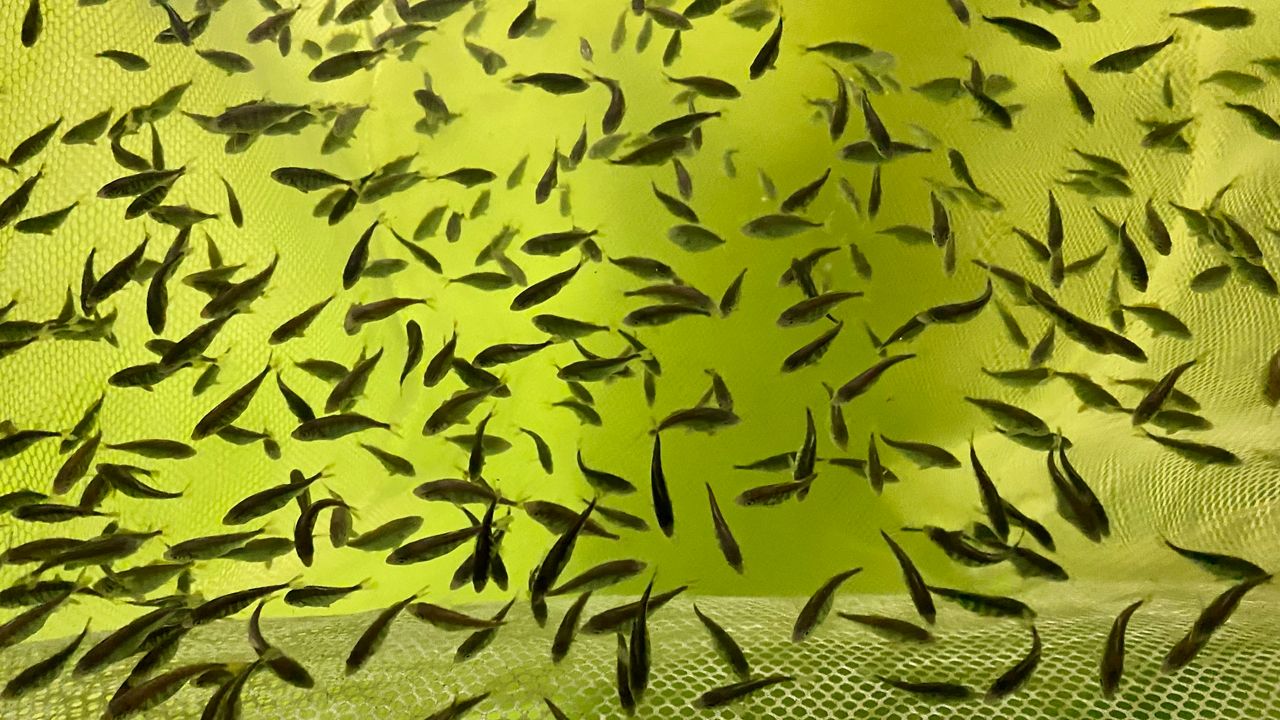A plan awaiting approval by the Maine Public Utilities Commission aims to remove some major obstacles to solar power growth in the state — but developers still expect roughly half of the many projects in the pipeline to fall through.
Central Maine Power joined industry groups and nonprofits earlier this month to submit the agreement to resolve three PUC proceedings related to delays in getting proposed solar projects online.
The plan aims to streamline requests to connect to the grid, especially through what are called “cluster studies.” These allow utilities to batch-process proposals that would link to the same substation, showing developers in groups whether there’s room for their projects where they want to build them or whether they or CMP could pay for upgrades to expand that capacity.
CMP has long faced complaints from solar companies about delays and inconsistencies in finishing these studies. In the new settlement, the utility acknowledges it could have done better.
The deal, pending PUC approval, would provide $550,000 for new analysts to work on the cluster studies. It also commits to deadlines to finish the studies and offers $150,000 for a facilitator to run the PUC’s interconnection working group, created to settle related disputes.
Jeremy Payne, the executive director of the Maine Renewable Energy Association, a party to the proposed settlement, said he’s optimistic that it will speed things along — to a point.
“It's certainly not a silver bullet,” he said. “But we think this can meaningfully improve the process.”
The issues the deal won’t necessarily solve are bigger-picture than CMP management. Maine’s 2019 net energy billing law — which lets customers share cost savings from renewable energy projects under 5 megawatts — helped fuel an explosion in solar proposals across the state.
CMP’s latest net billing report to the PUC showed more than a gigawatt, or 1,000 megawatts, of pending solar energy projects. Versant Power reported a queue of at least 330 megawatts.
Right now, though, Payne said Maine substations generally have far less capacity available for new interconnections. Utilities or developers can sometimes fund upgrades to increase capacity, but it isn’t always possible, or may not happen in time. Add that to permitting and other challenges, Payne said, and the result is that “well over half” these projects are likely to die.
“Companies may just decide, ‘I'm going to deploy my capital elsewhere because I can get a faster answer,’ or even customers may say, ‘I'm tired of waiting,’” Payne said. “There's built-in limitations within our infrastructure, and then there are built-in limitations within the budgets of these projects. You just can't absorb any and all costs, even if you really want to.”
Better processing of CMP’s cluster studies will speed up at least one “yes” or “no” to help developers decide whether to stay in a crowded queue. Bob Cleaves, a co-founder of Dirigo Solar in Portland, said it will also clarify what infrastructure constraints are CMP’s to fix.
“And then the question becomes, how quickly will those upgrades take place such that you'll still be there when the process is over?” Cleaves said. “I think 2022 is going to be an important year for us in terms of seeing the results of those cluster studies and what that means for our development cycle.”
Dirigo has only built larger utility-scale solar projects in Maine to date, but Cleaves said they have at least 50 megawatts of proposed net-billed solar awaiting a cluster study. Some projects are not subject to these studies, depending on location, and have moved forward separately.
Still, Cleaves agreed with Payne’s prediction of at least a 50% attrition rate in Maine’s current solar queue. Even if CMP and developers invest tens of millions of dollars in upgrades, Cleaves and Payne said, it isn’t realistic to expect enough room for everyone.
Payne argued that this should reassure towns and neighbors who are worried that solar panels will soon cover too much of Maine’s farmland and green spaces.
“I just don't share the panic that… ‘Oh my God, what if all of this happened?’” Payne said. “None of that is going to be real when we start to see how many projects fail.”
But even half of what’s proposed would make a huge contribution to Maine’s climate change goals. CMP’s December net billing report shows that half of the capacity of the current solar queue could have supplied about a third of the utility’s entire peak demand in 2021.
Though weather and other factors mean the daily output of a solar farm is generally lower than its hypothetical maximum capacity, half the queue would still represent major progress.
Maine utilities must buy and sell 80% of their power from renewable sources by 2030, and the state aims to become carbon-neutral by 2045. These renewables will also help reduce the carbon footprint of electrifying homes and vehicles, which are Maine’s top sources of emissions.









